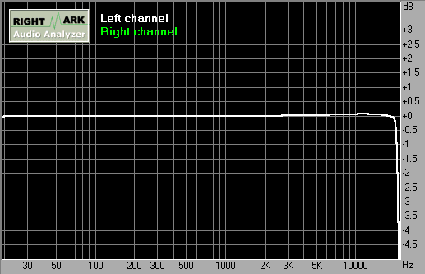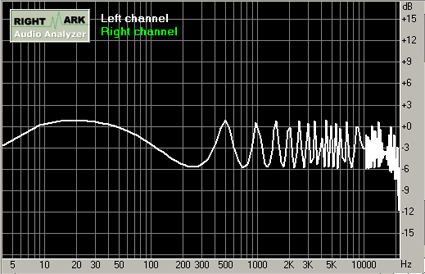Terratec DMX 6Fire 24/96 vs. Sound Blaster Audigy Platinum
Test Configuration And Methods
| System | |
|---|---|
| Processor | Intel Celeron 800 MHz |
| Memory | 256 MB PC100 |
| Hard drive | Western Digital 40 GB |
| CD drives | Teac CD540E and Pioneer A105S |
| Video adapter | ATI Radeon 64 DDR |
| Drivers and software | |
| DirectX | 8.0a |
| OS | Windows XP Professional |
Both cards were tested in the same environment and with the same measuring equipment. The speakers we used were Altec Lansing 621 and 641. Test software was as follows: Audio Winbench; Pinguin Audio Meter; Right Mark Audio Analyzer 3.1; Spectra Labs SAS; American MCGee's Alice; Quake III Arena; Half Life; MDK2.
Converter Quality: Benchmarks
We did a series of tests using Right Mark Audio Analyzer 3.1 and Pinguin Audio Meter software, and then a series of tests recording from analog to digital with subjective listening in order to assess the quality of conversion. Note that the Terratec DMX 6Fire 24/96 has a head-start in two respects: you can use the external input/ output of the rack, whereas the Audigy Platinum has no analog RCA output on the rack and you have to use the back mini-jack output; we also did recording tests in 24 bits/ 96 kHz on the DMX 6Fire 24/96, something you can't do on the Audigy. The following results are therefore those of 16 bits/ 44.1 kHz, to give a valid comparison. The results obtained with the Audigy Platinum may differ slightly from those of our earlier Platinum eX tests. This is because the test platform was not the same as before and because the Right Mark Audio has since been upgraded.
Bandwidth Test

DMX 6Fire 24/96

Audigy Platinum
The frequency response curve of the card indicates whether it reproduces all the frequencies of the sound spectrum equally well. The test measured from 20 Hz to 20 KHz, the standard accepted range of human hearing. The graphs speak for themselves and require no further explanation. The DMX 6Fire 24/96 curve (-0.02; +0.08) shows that the card is the best of its kind and pretty close to professional cards. The Audigy Platinum (-5.90; +0.87), on the other hand, is not as commendable. It fluctuates quite a bit and its stability is not exactly faultless.
Stay on the Cutting Edge
Join the experts who read Tom's Hardware for the inside track on enthusiast PC tech news — and have for over 25 years. We'll send breaking news and in-depth reviews of CPUs, GPUs, AI, maker hardware and more straight to your inbox.
Current page: Test Configuration And Methods
Prev Page Creative Labs Sound Blaster Audigy Platinum: SB1394 Port Next Page Noise Level And InterferenceMost Popular

